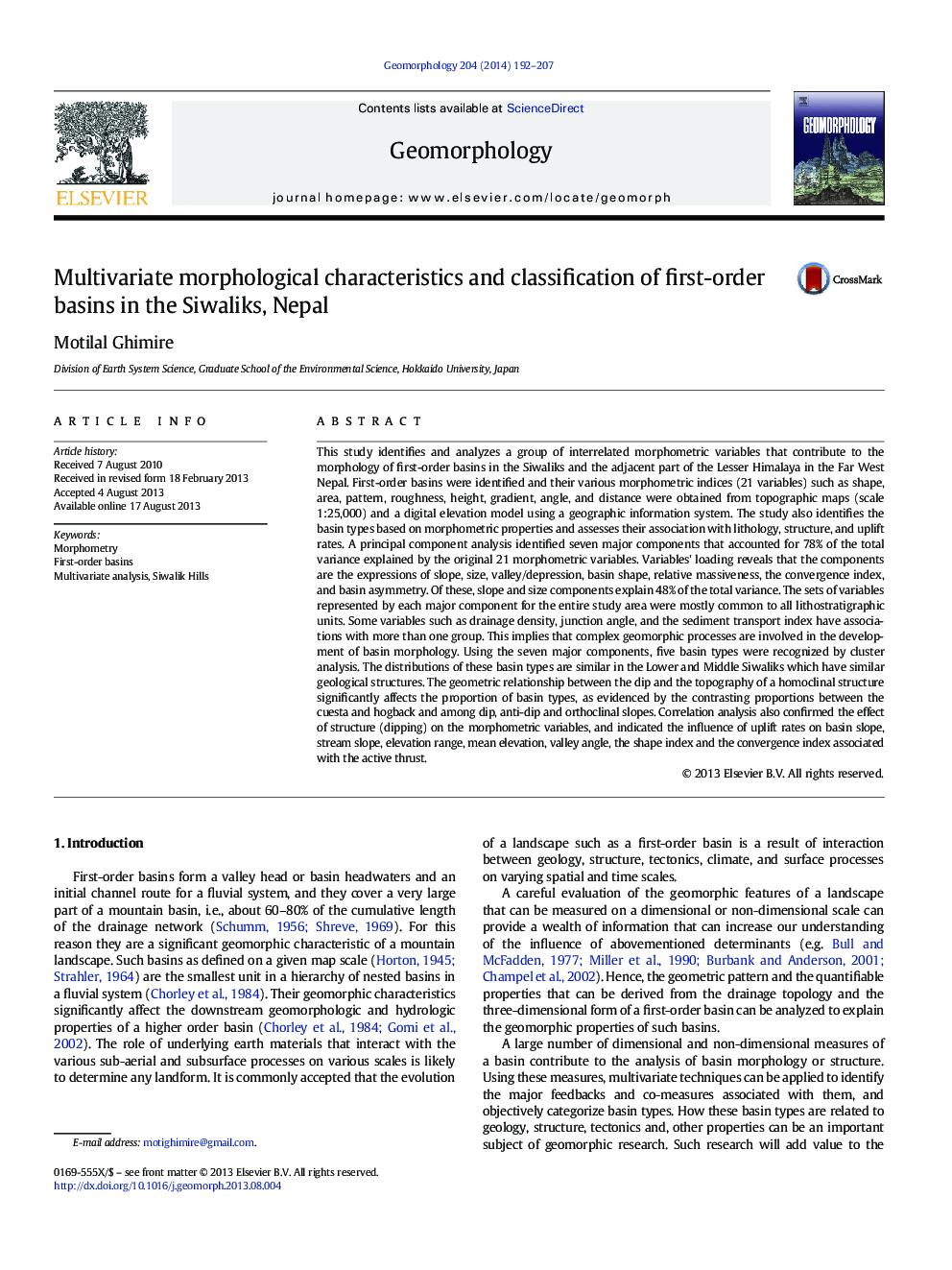| کد مقاله | کد نشریه | سال انتشار | مقاله انگلیسی | نسخه تمام متن |
|---|---|---|---|---|
| 6432720 | 1635445 | 2014 | 16 صفحه PDF | دانلود رایگان |
- Seven principal components explain 21 morphometric variables of first order basin.
- Slope, size, valley and shape were identified as leading variables.
- Variables related with principal components were consistent for all litho-units.
- The first-order basins were classified into five distinct types.
- Control of lithology, structure and uplift rate on basin morphology was recognized.
This study identifies and analyzes a group of interrelated morphometric variables that contribute to the morphology of first-order basins in the Siwaliks and the adjacent part of the Lesser Himalaya in the Far West Nepal. First-order basins were identified and their various morphometric indices (21 variables) such as shape, area, pattern, roughness, height, gradient, angle, and distance were obtained from topographic maps (scale 1:25,000) and a digital elevation model using a geographic information system. The study also identifies the basin types based on morphometric properties and assesses their association with lithology, structure, and uplift rates. A principal component analysis identified seven major components that accounted for 78% of the total variance explained by the original 21 morphometric variables. Variables' loading reveals that the components are the expressions of slope, size, valley/depression, basin shape, relative massiveness, the convergence index, and basin asymmetry. Of these, slope and size components explain 48% of the total variance. The sets of variables represented by each major component for the entire study area were mostly common to all lithostratigraphic units. Some variables such as drainage density, junction angle, and the sediment transport index have associations with more than one group. This implies that complex geomorphic processes are involved in the development of basin morphology. Using the seven major components, five basin types were recognized by cluster analysis. The distributions of these basin types are similar in the Lower and Middle Siwaliks which have similar geological structures. The geometric relationship between the dip and the topography of a homoclinal structure significantly affects the proportion of basin types, as evidenced by the contrasting proportions between the cuesta and hogback and among dip, anti-dip and orthoclinal slopes. Correlation analysis also confirmed the effect of structure (dipping) on the morphometric variables, and indicated the influence of uplift rates on basin slope, stream slope, elevation range, mean elevation, valley angle, the shape index and the convergence index associated with the active thrust.
Journal: Geomorphology - Volume 204, 1 January 2014, Pages 192-207
